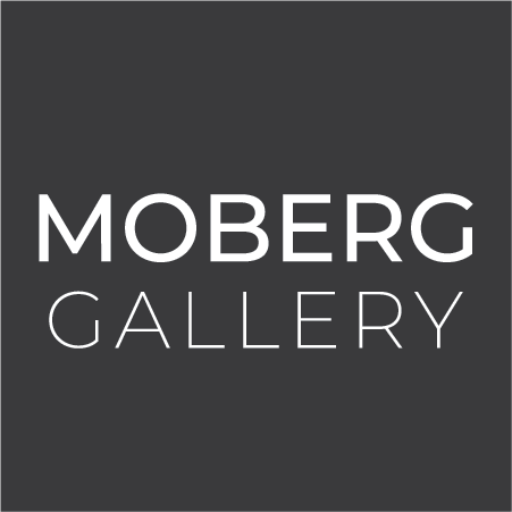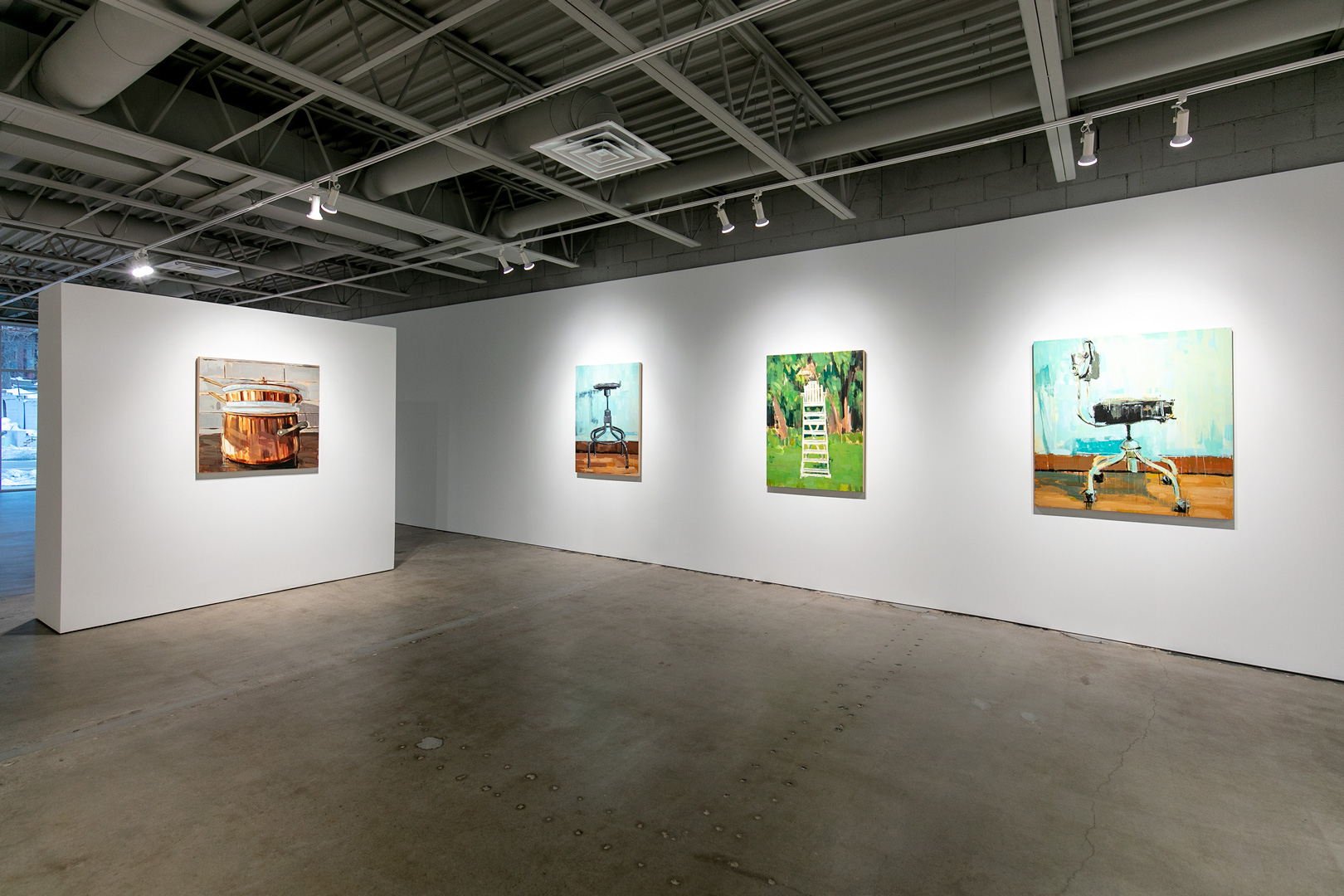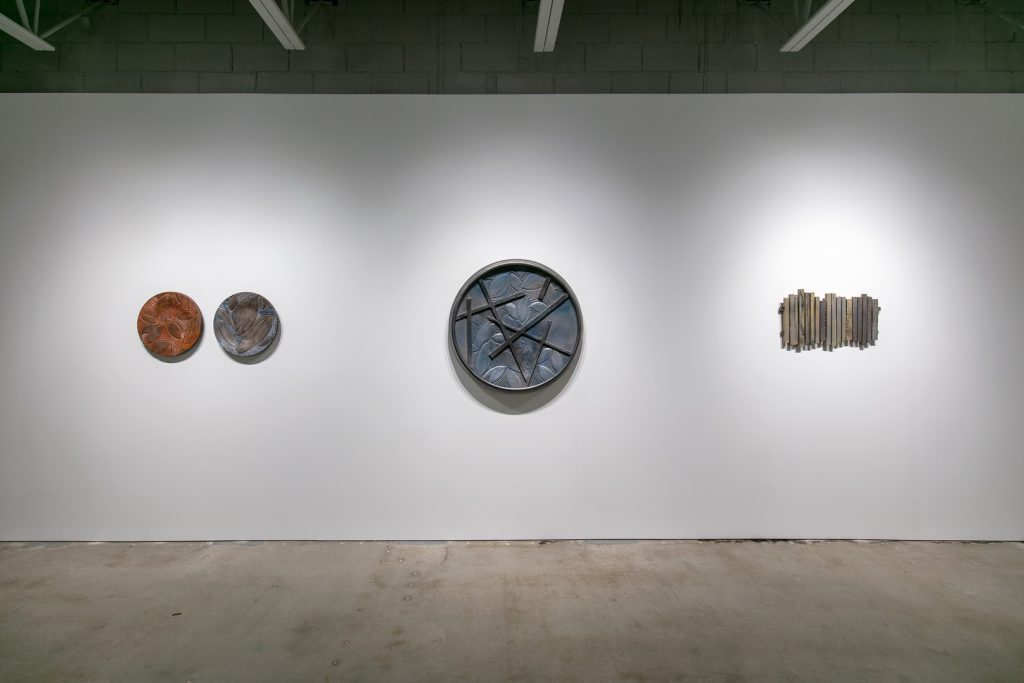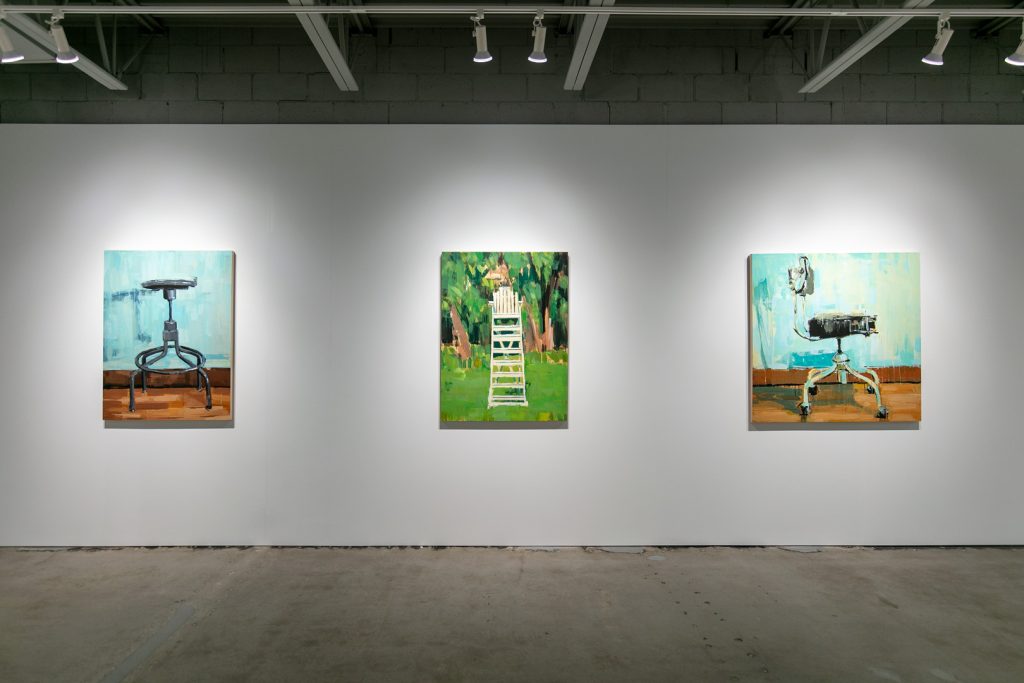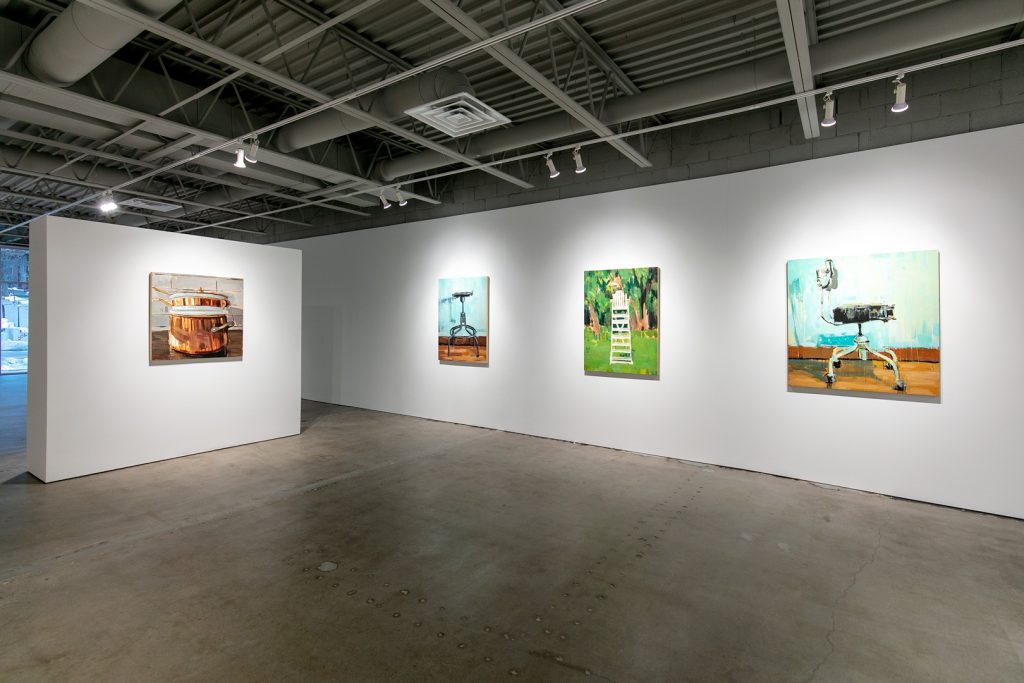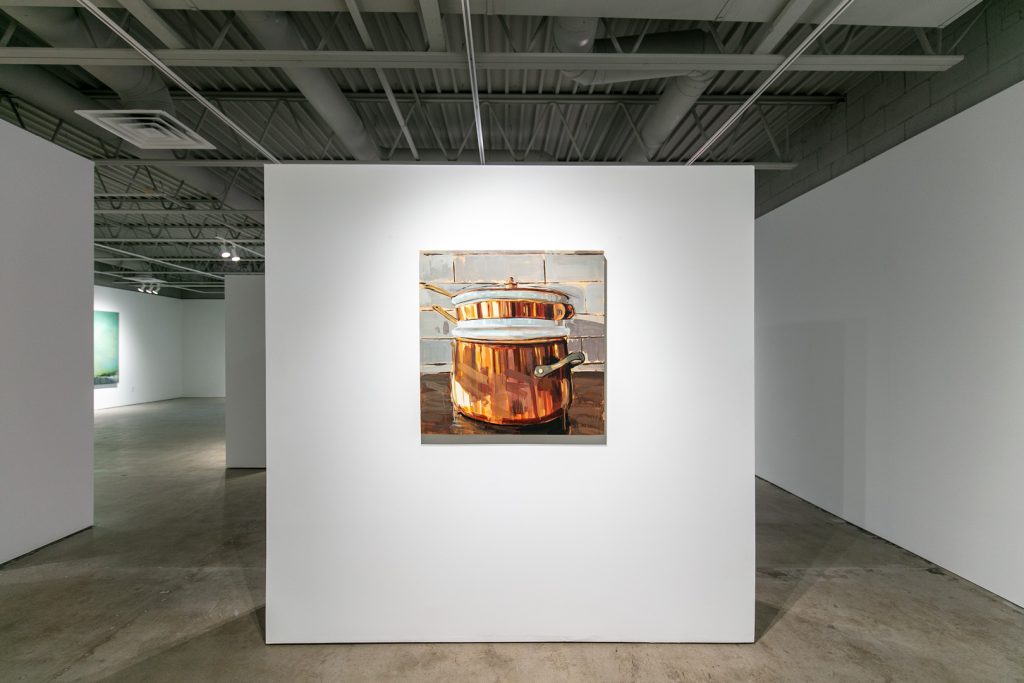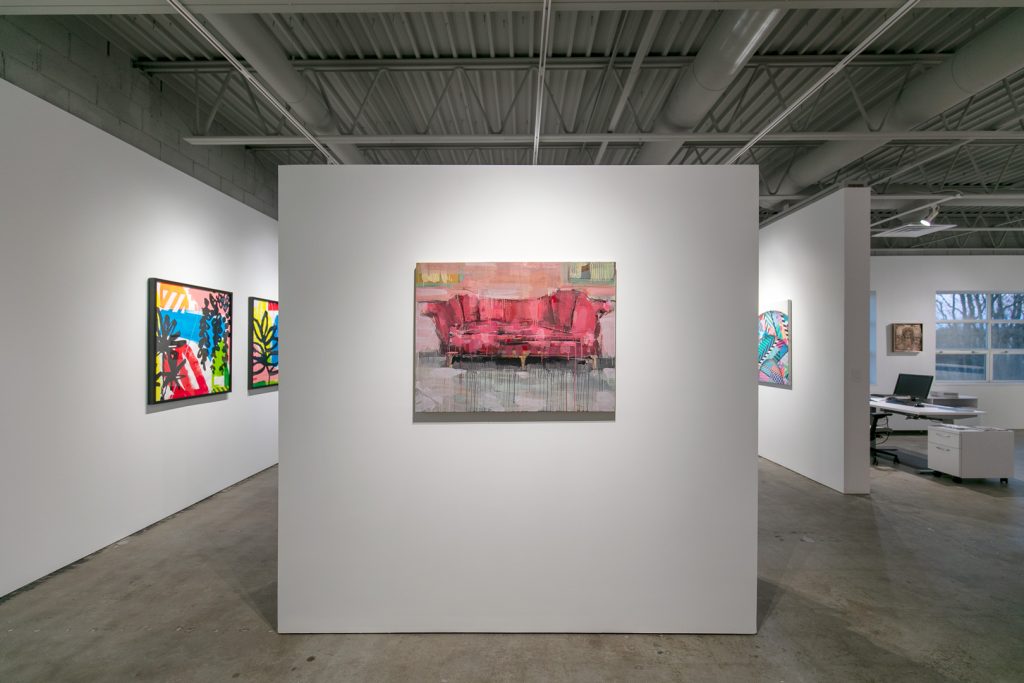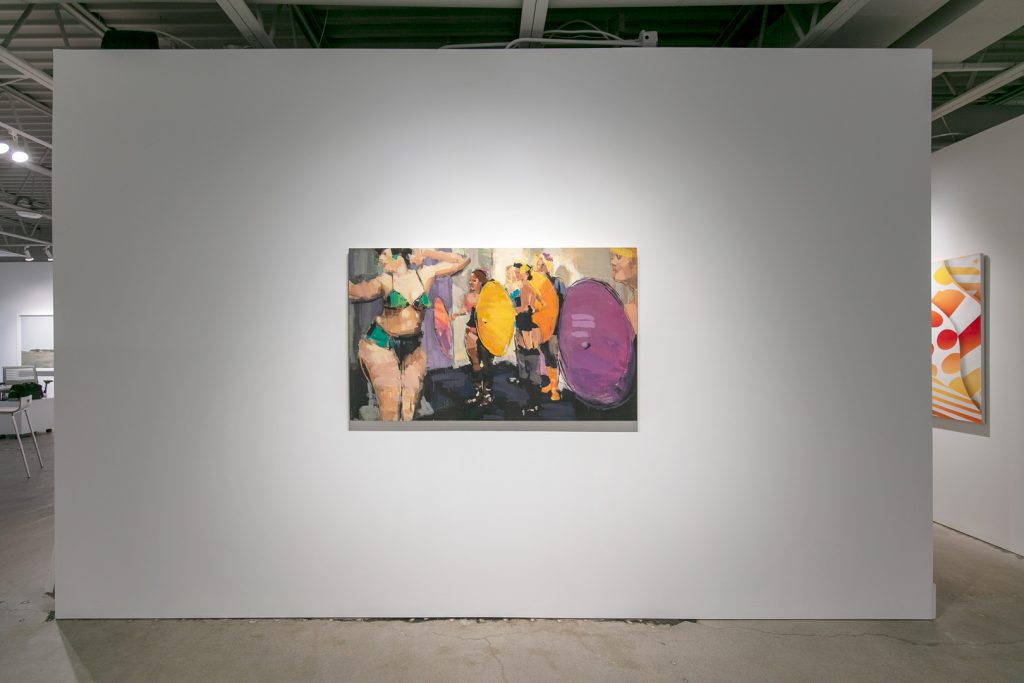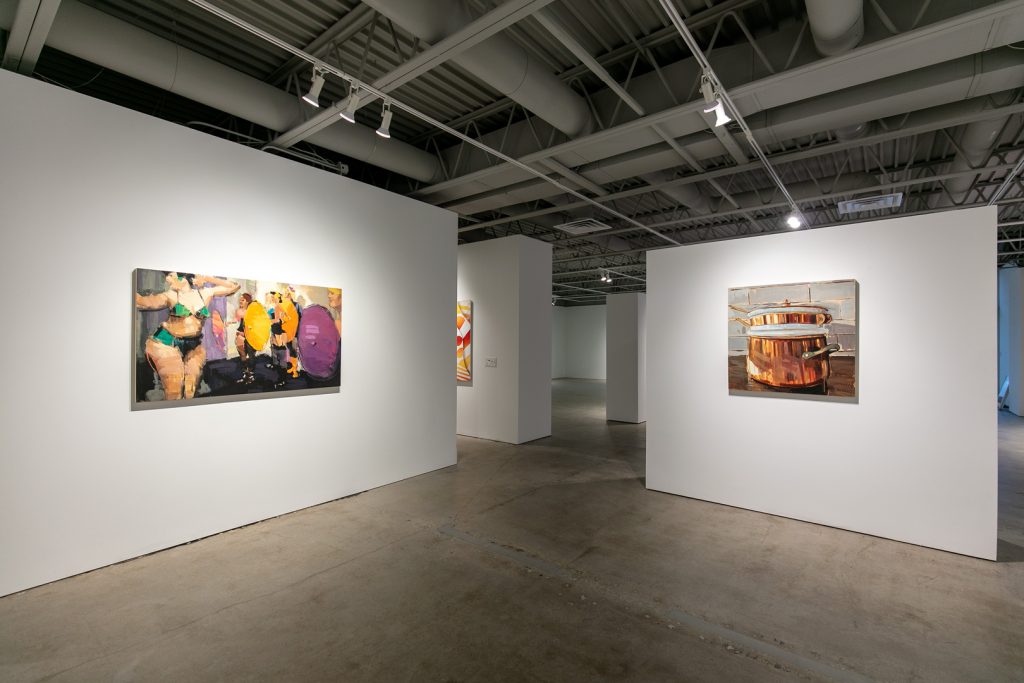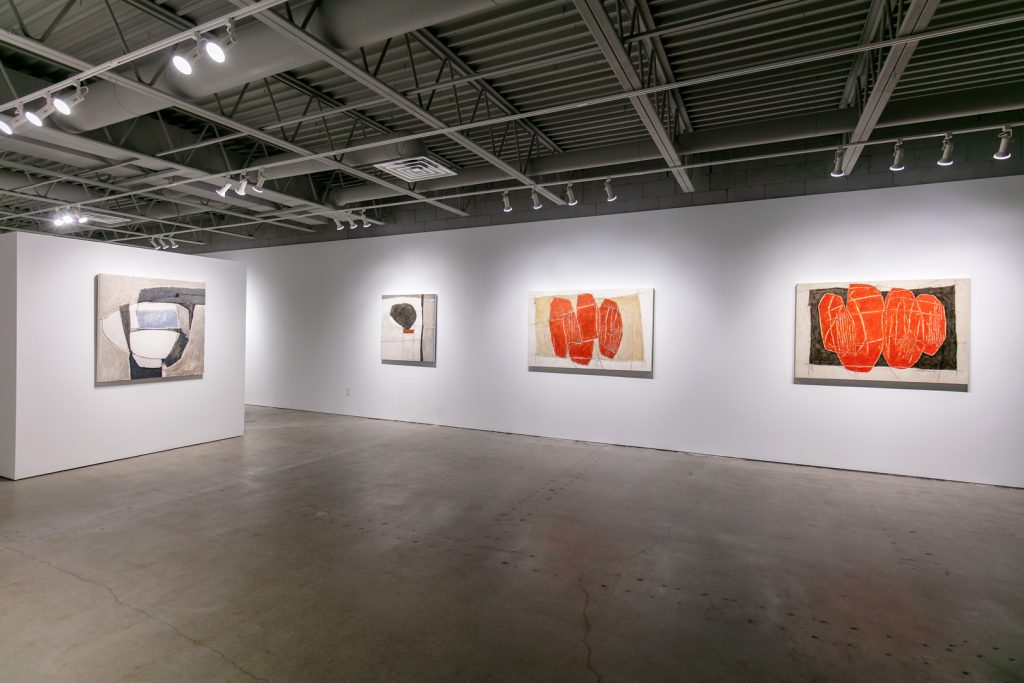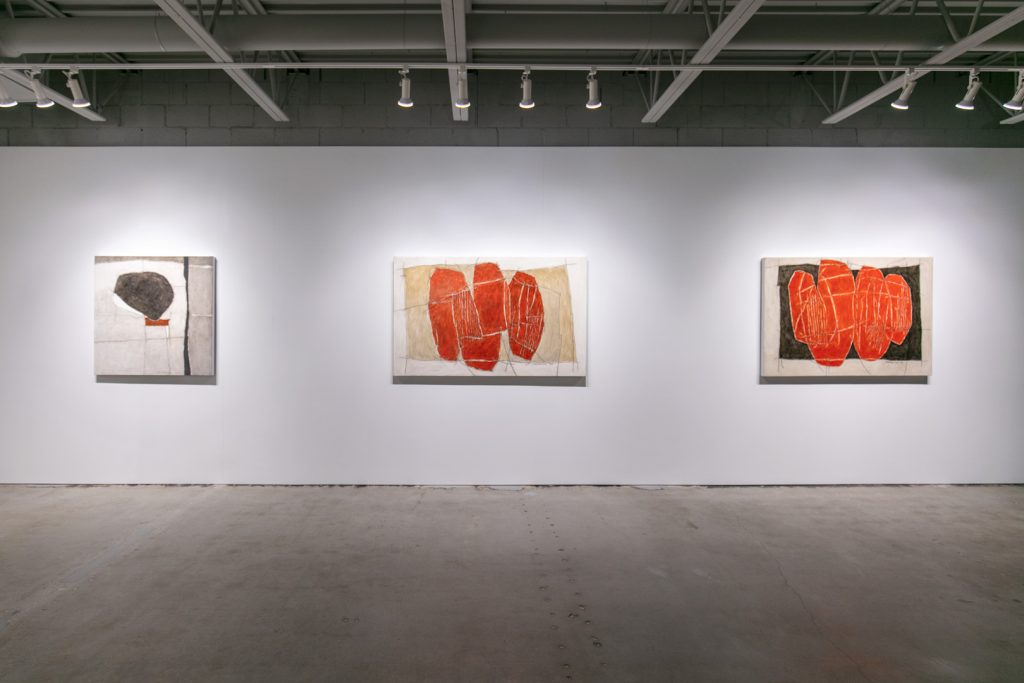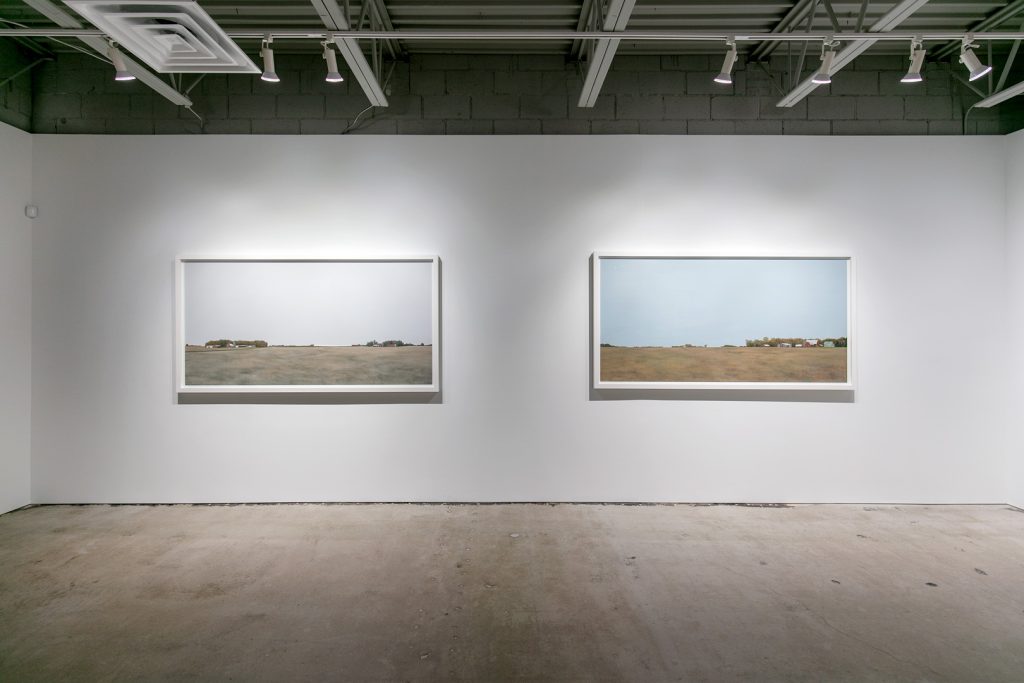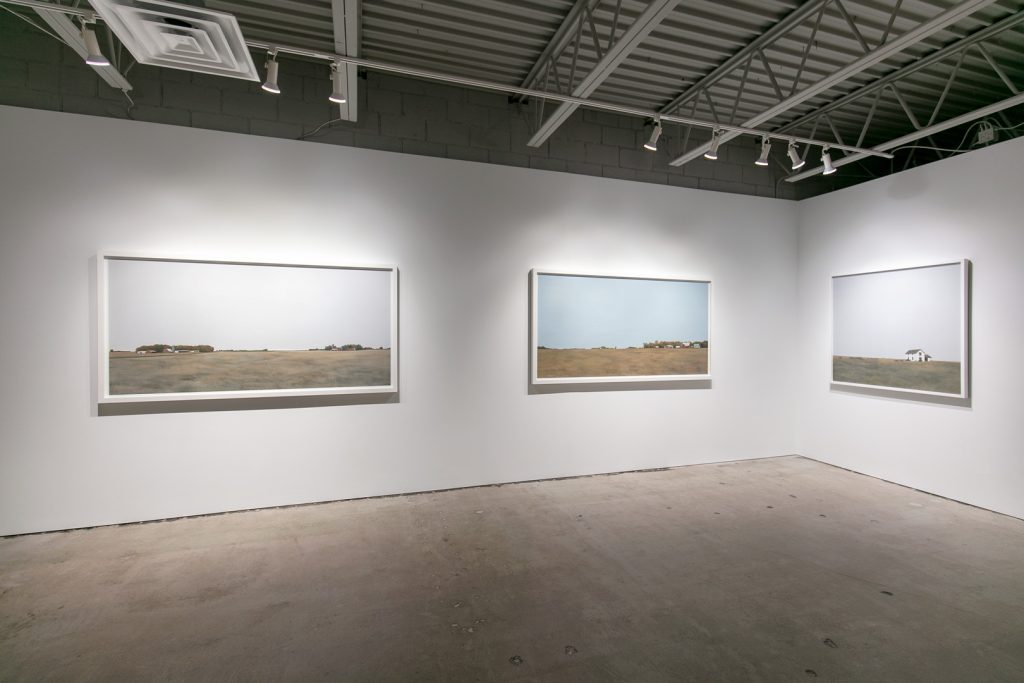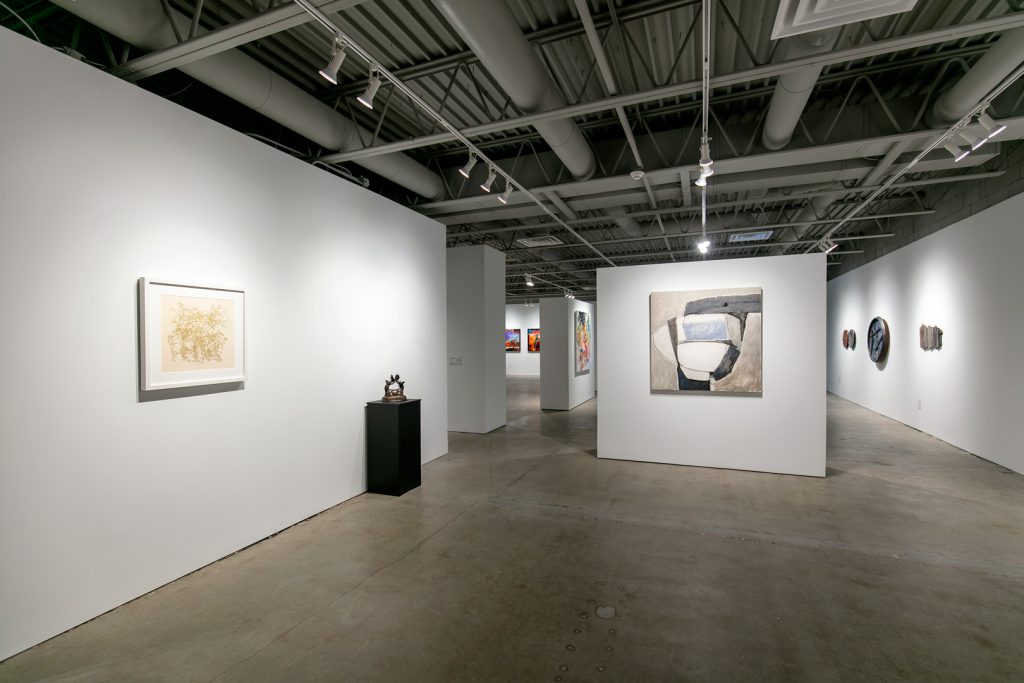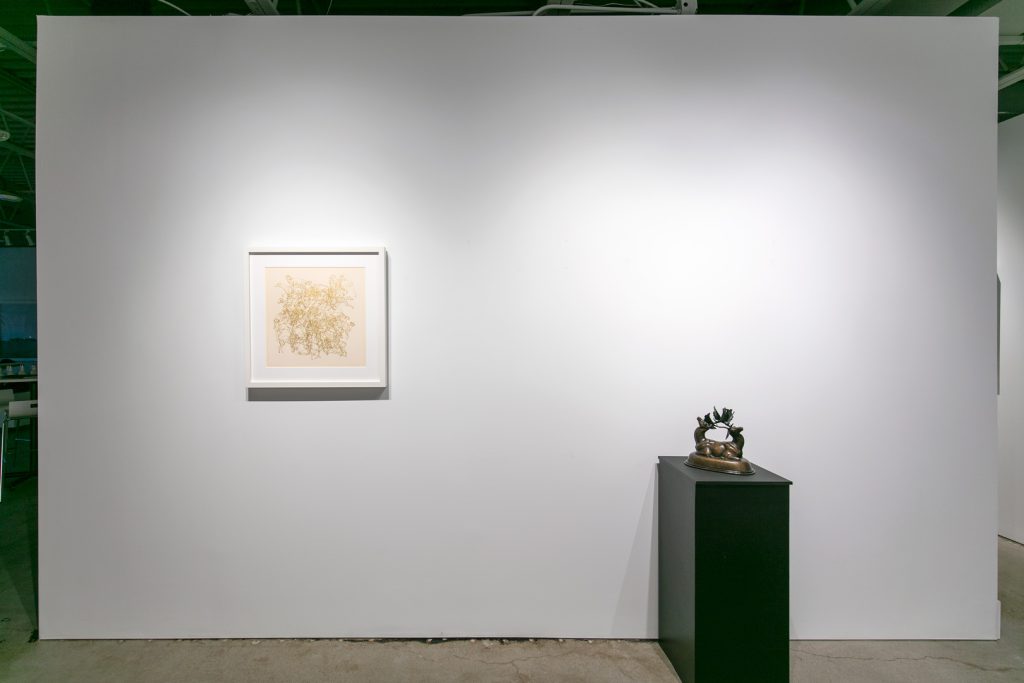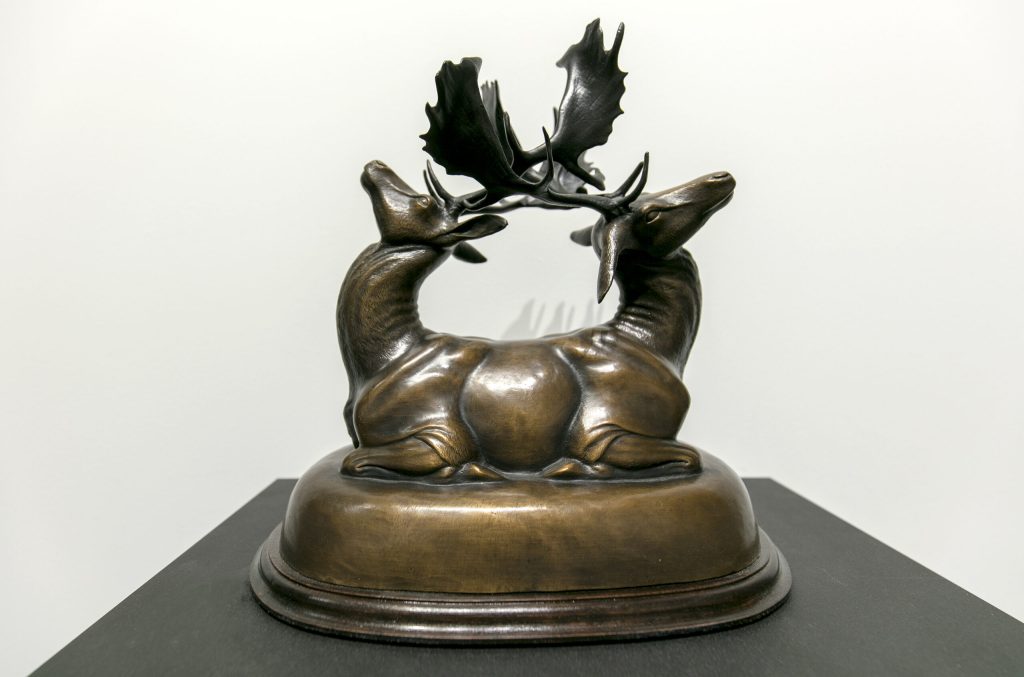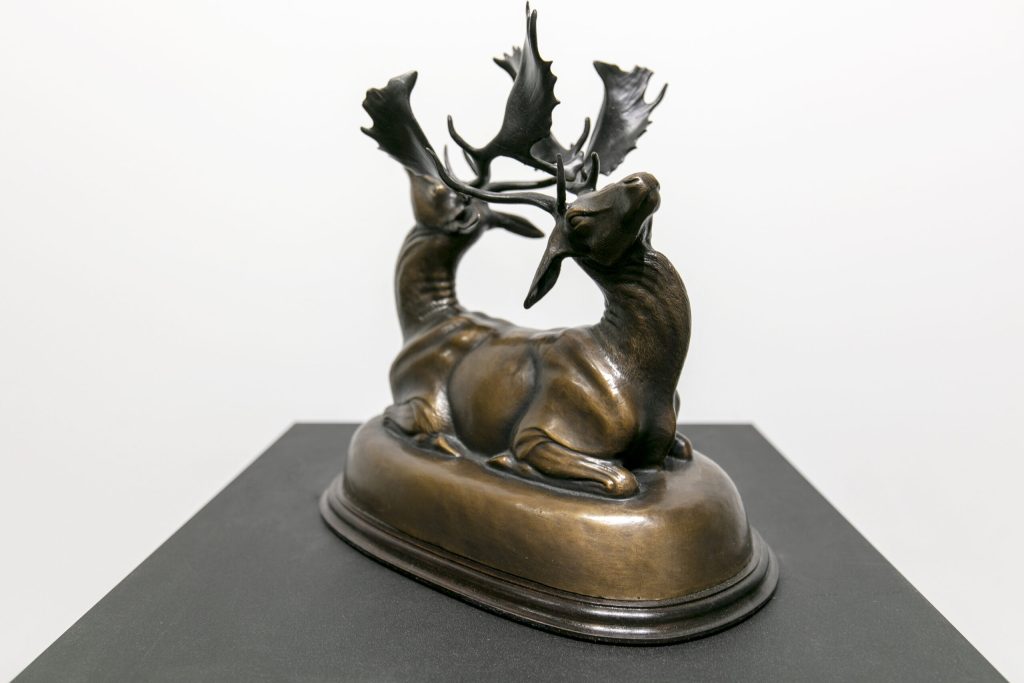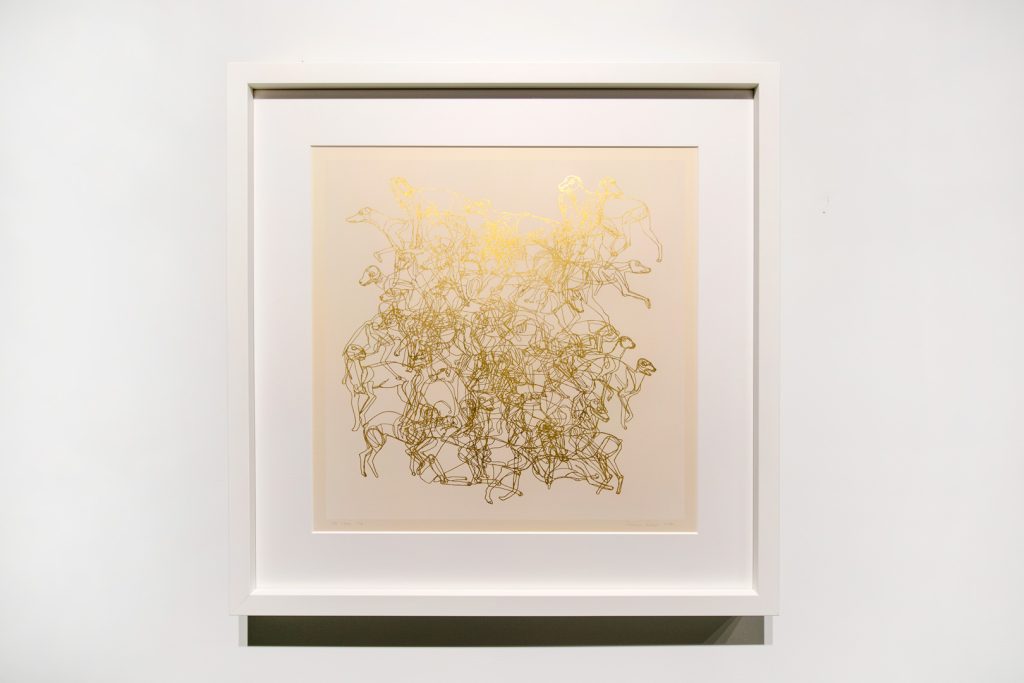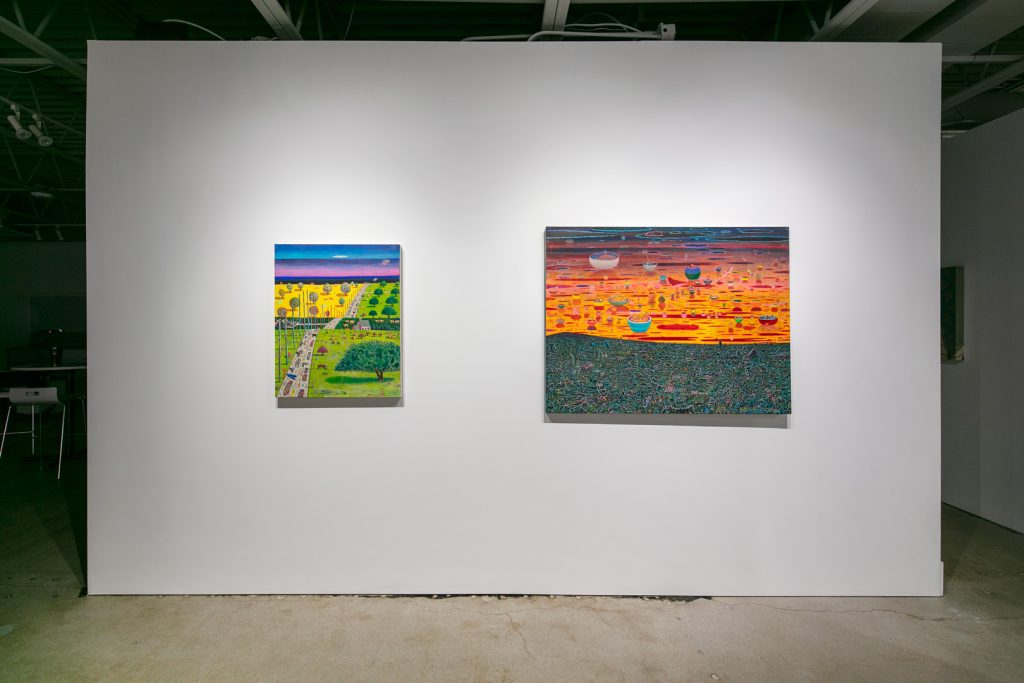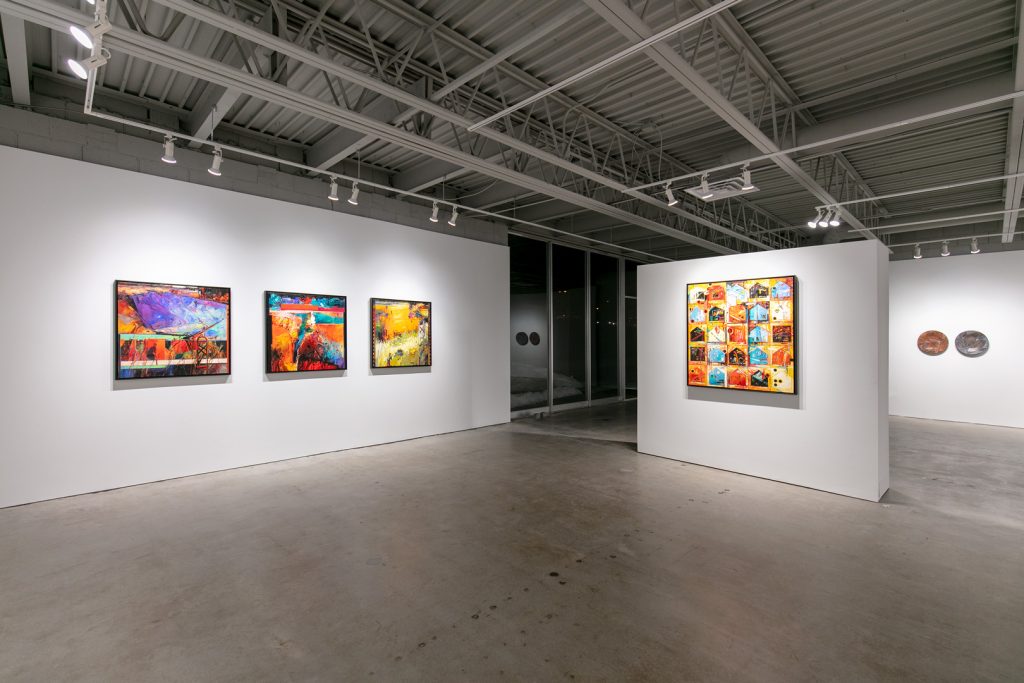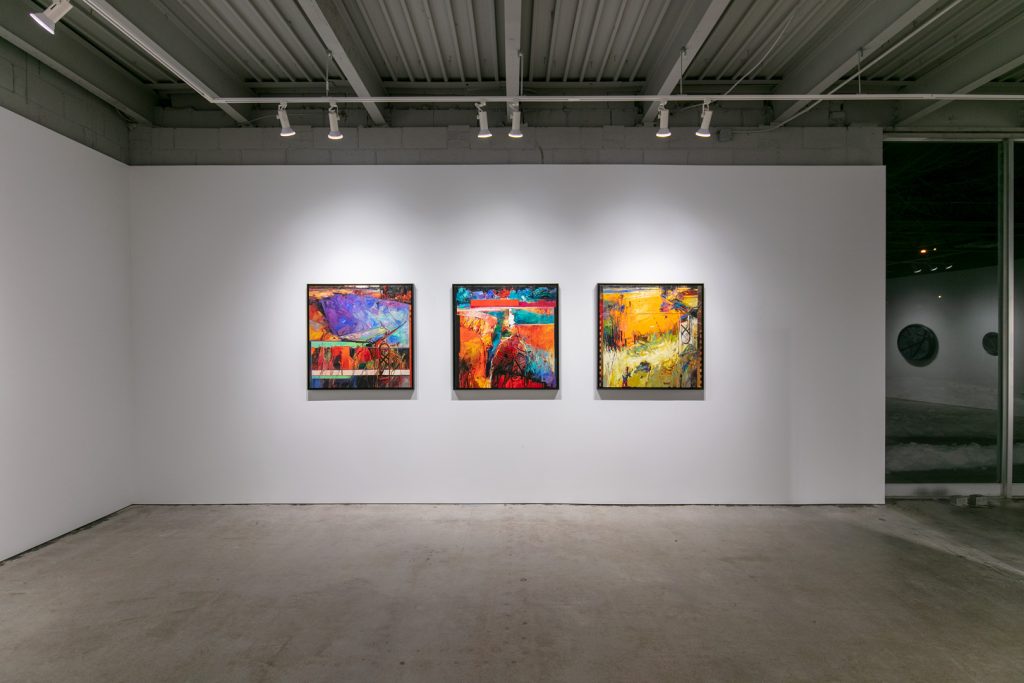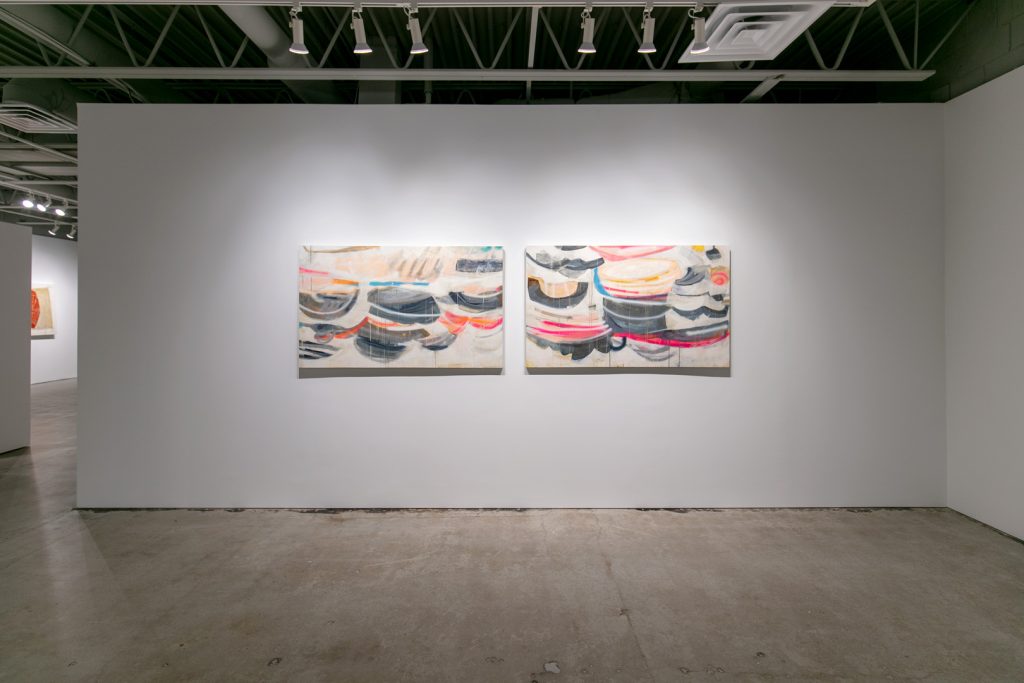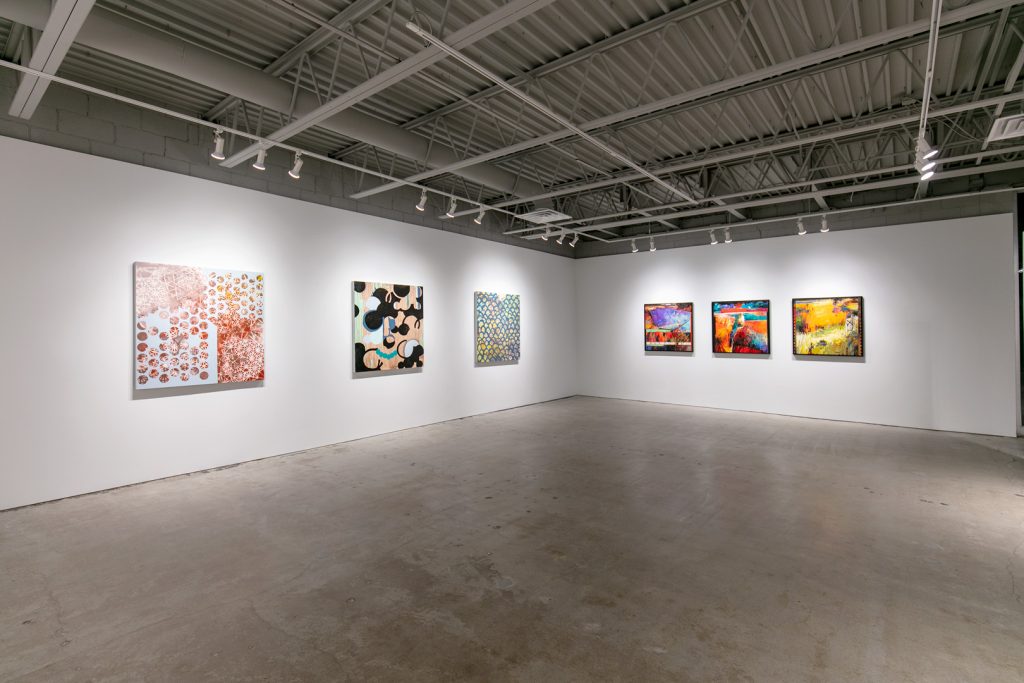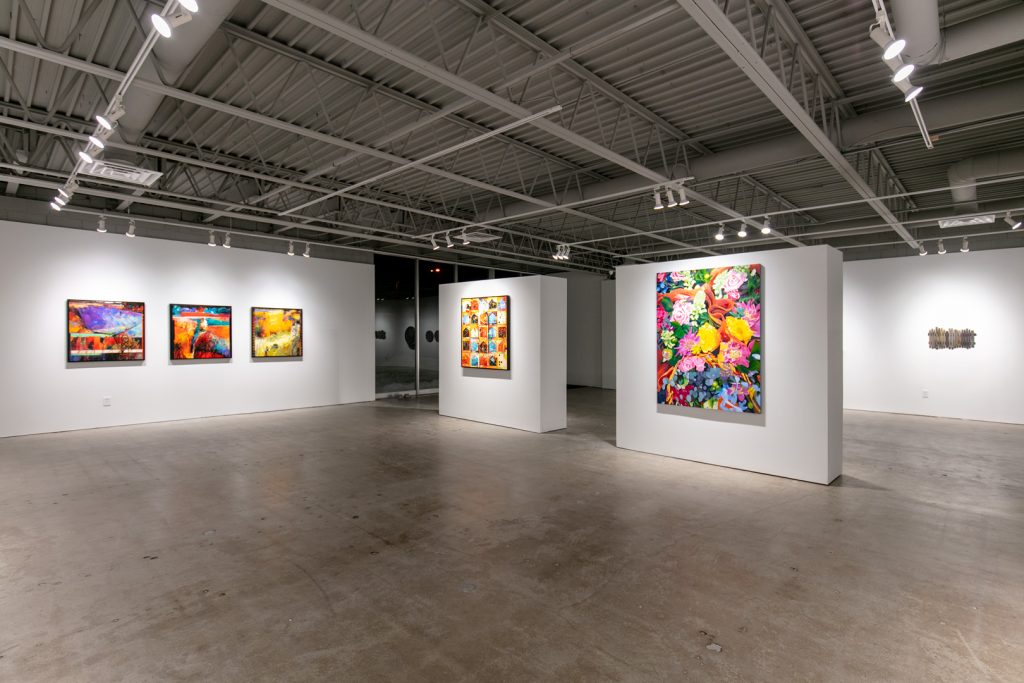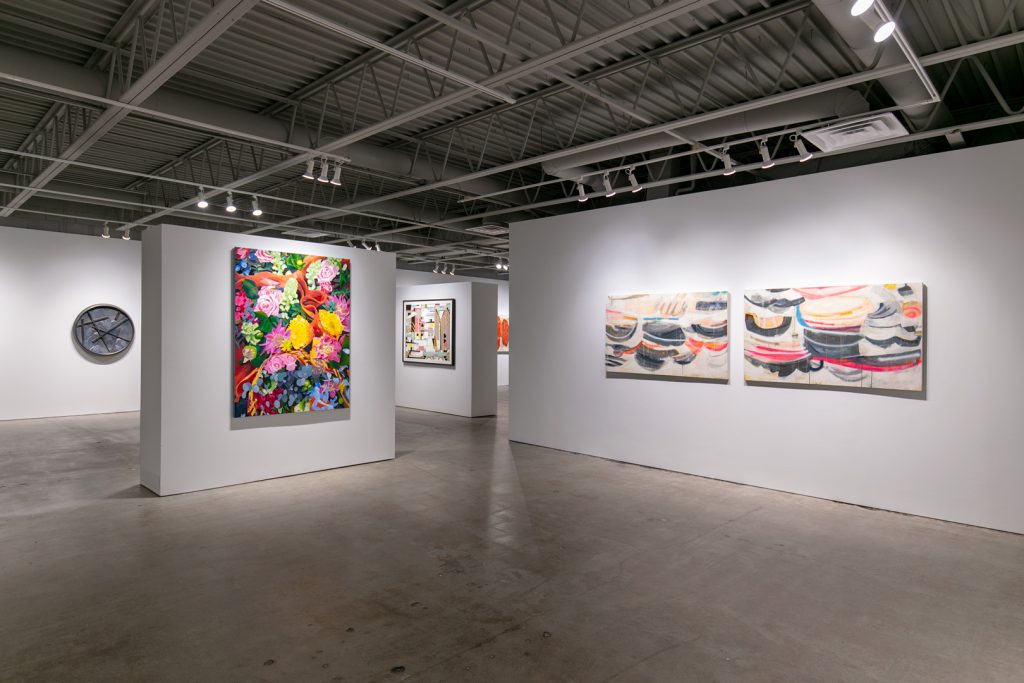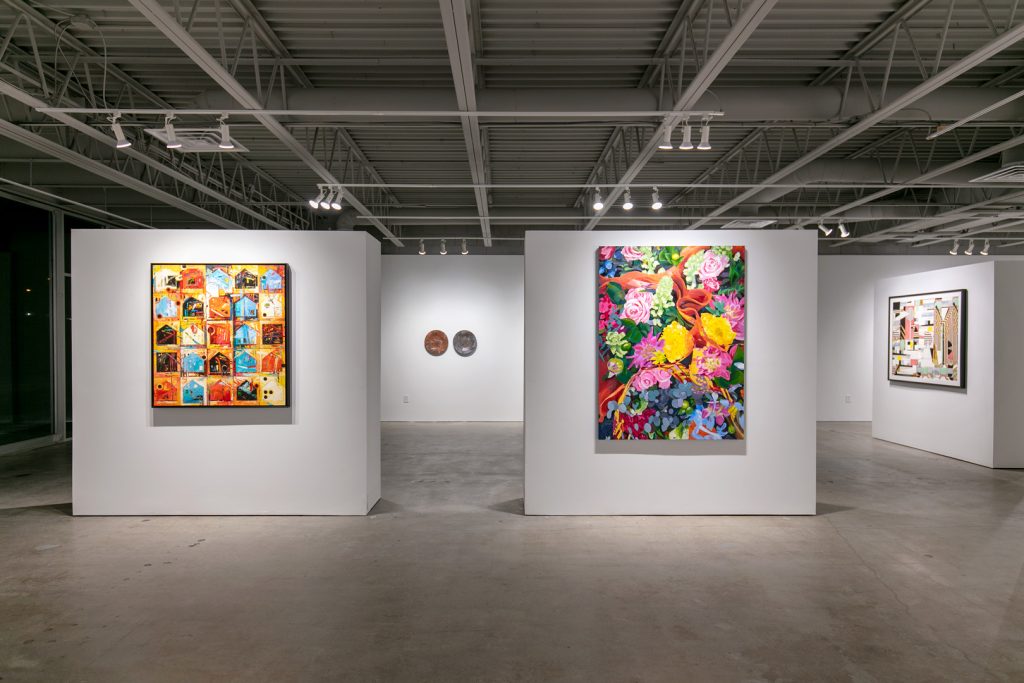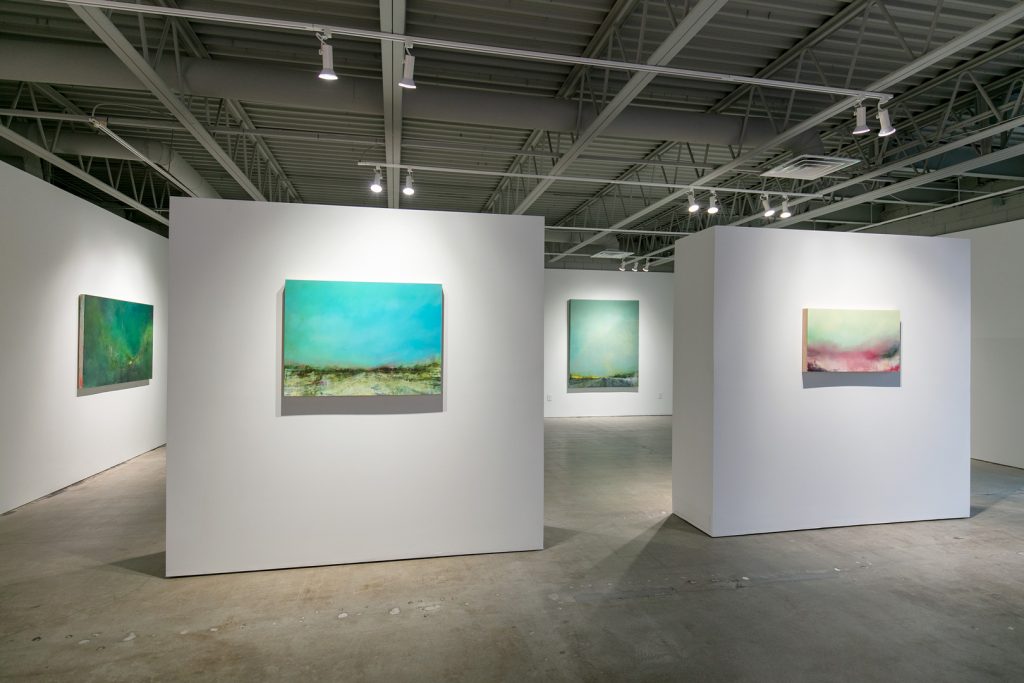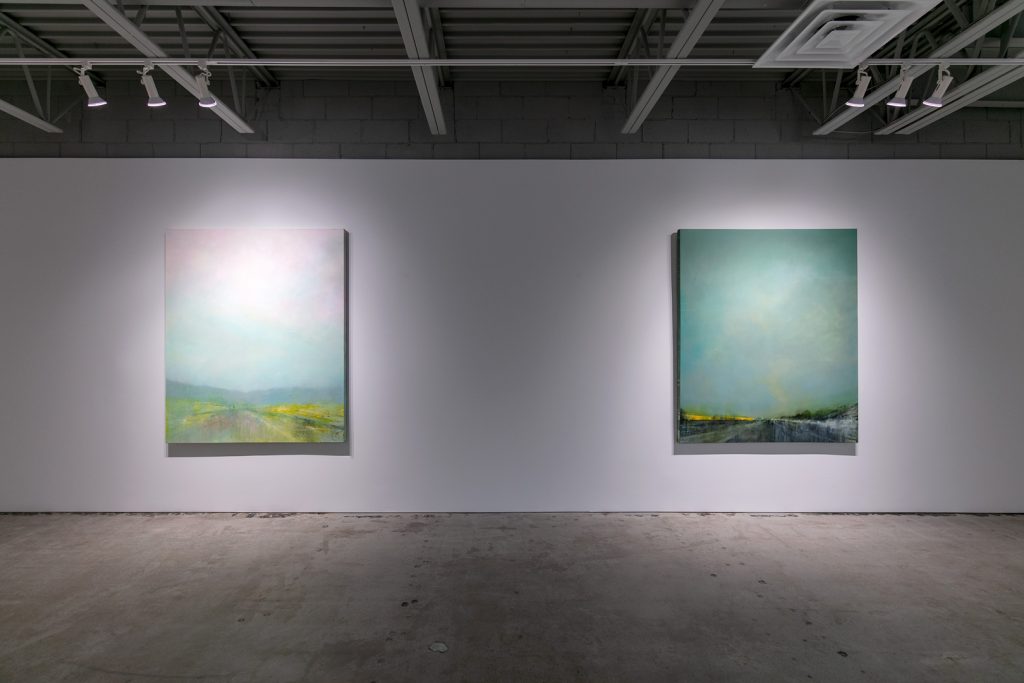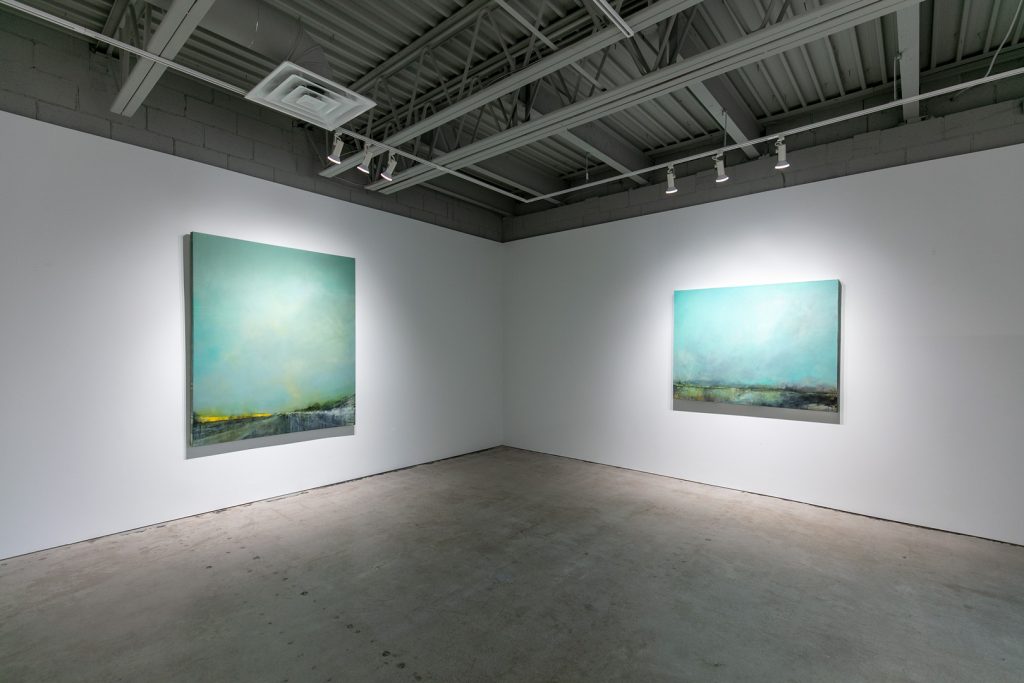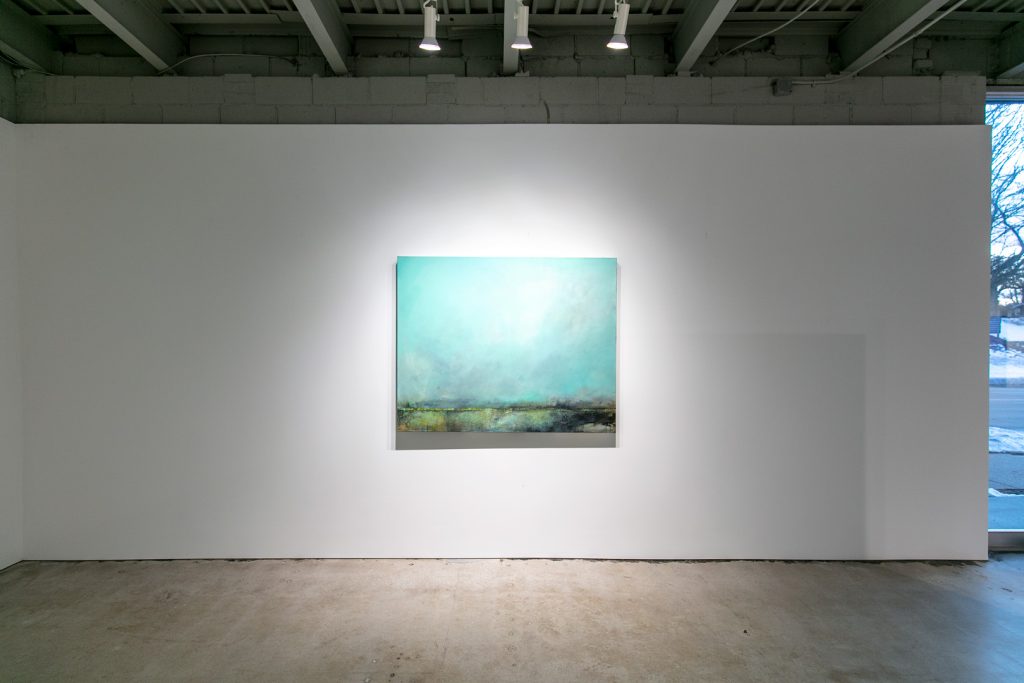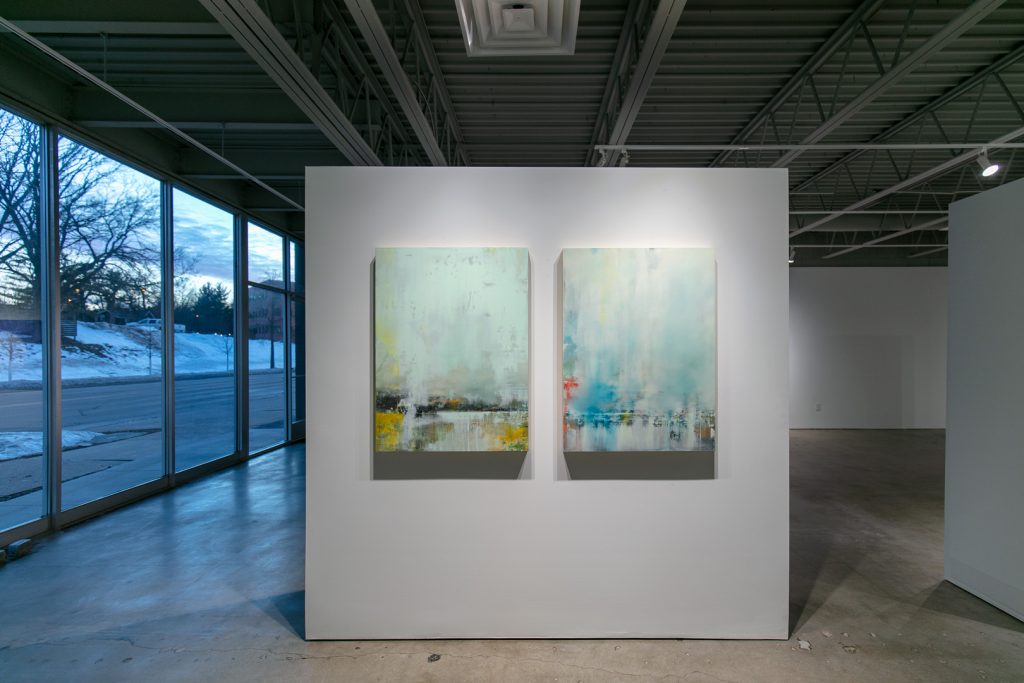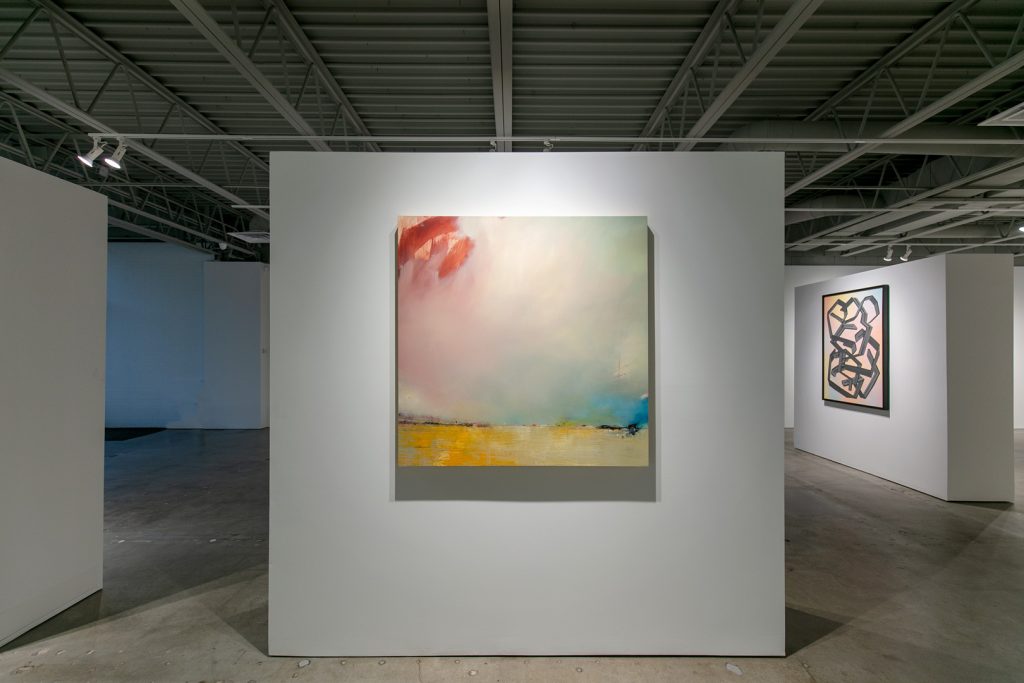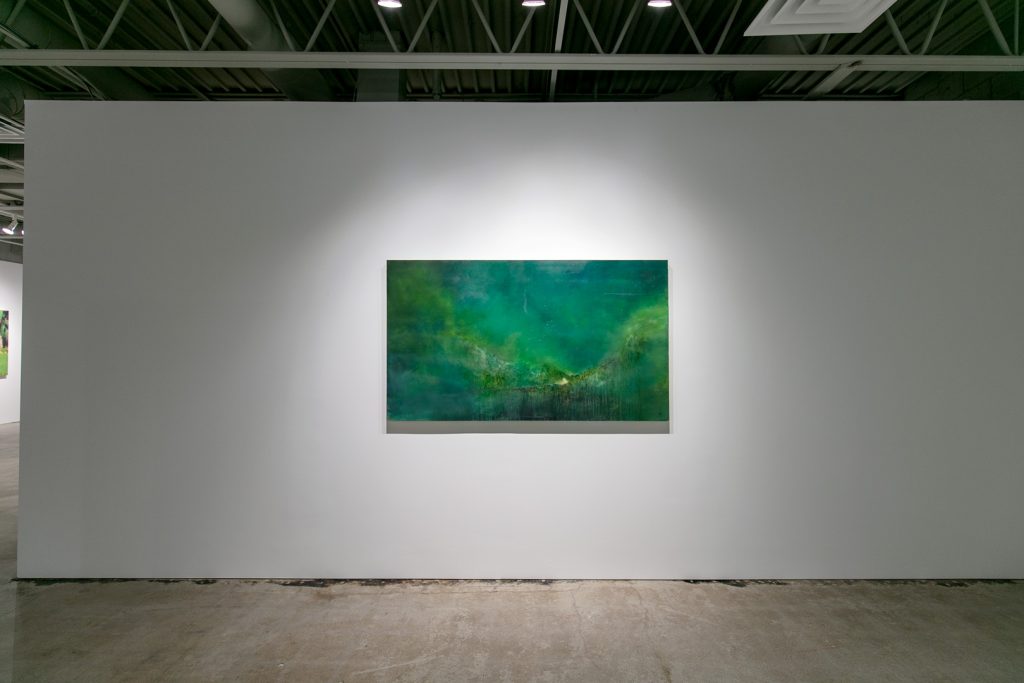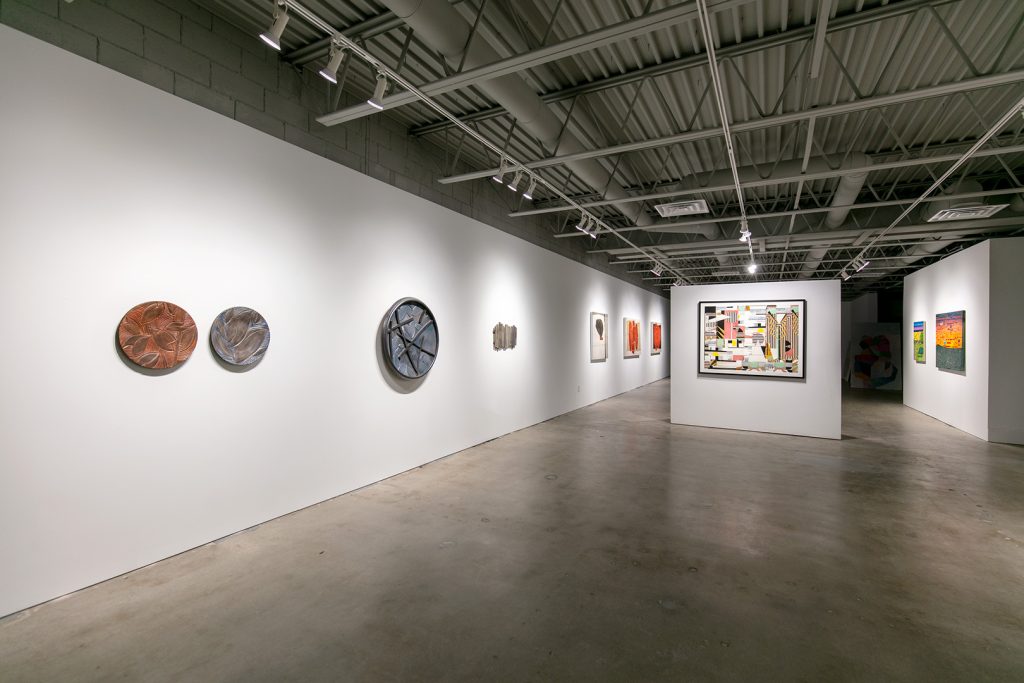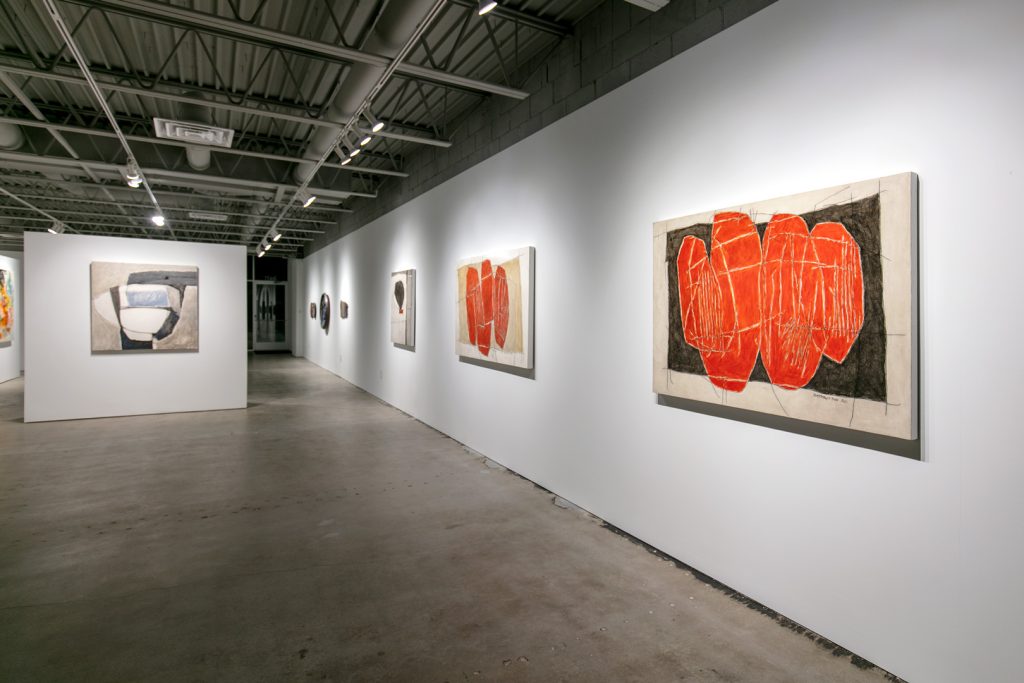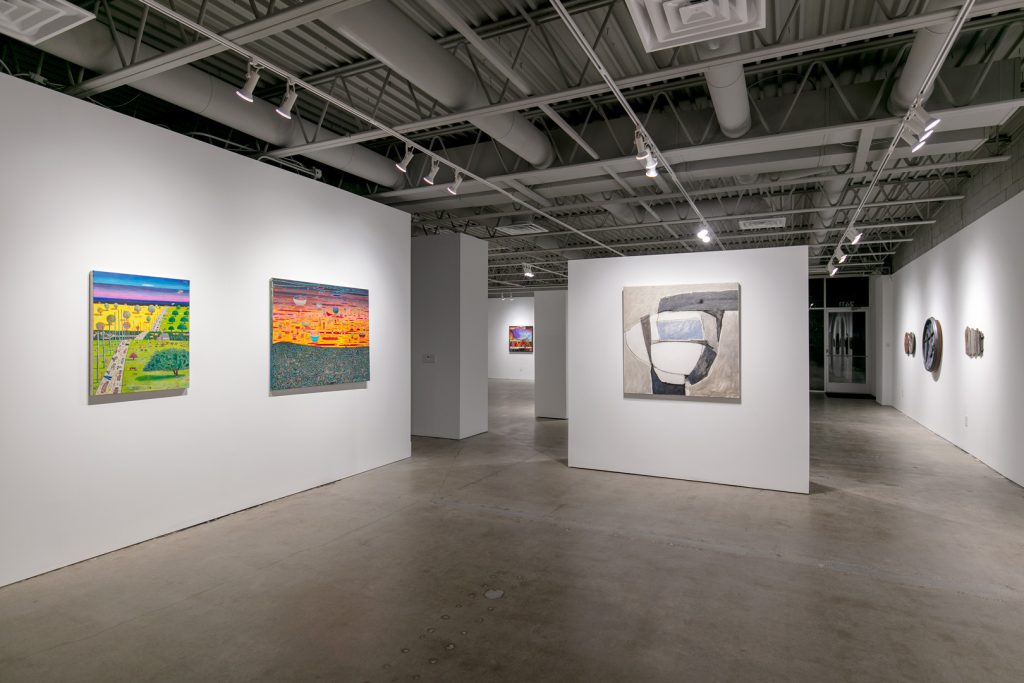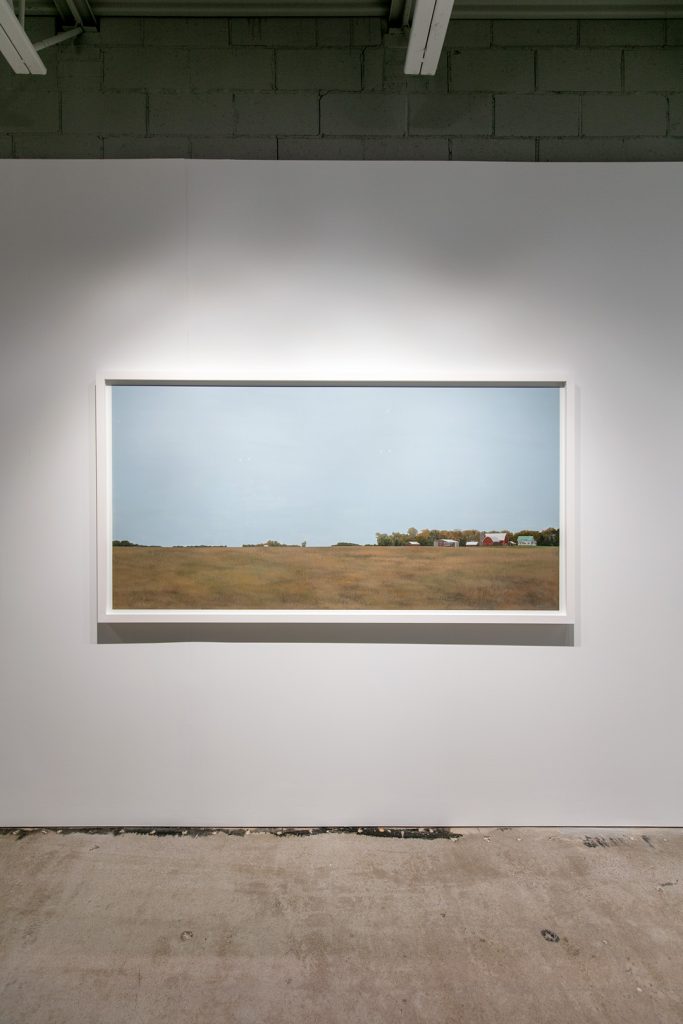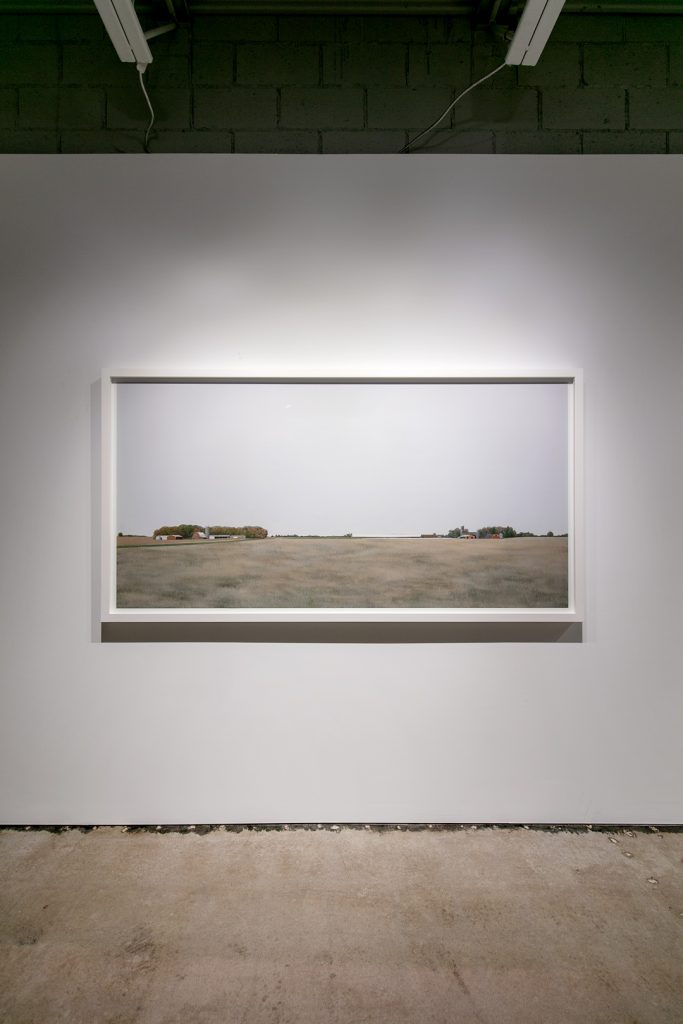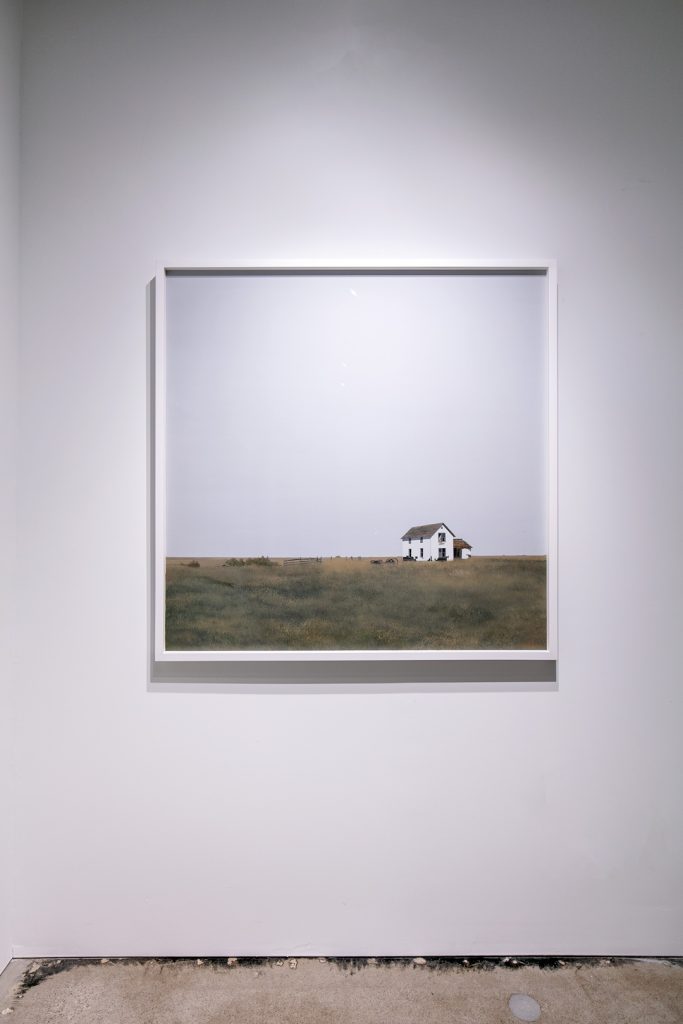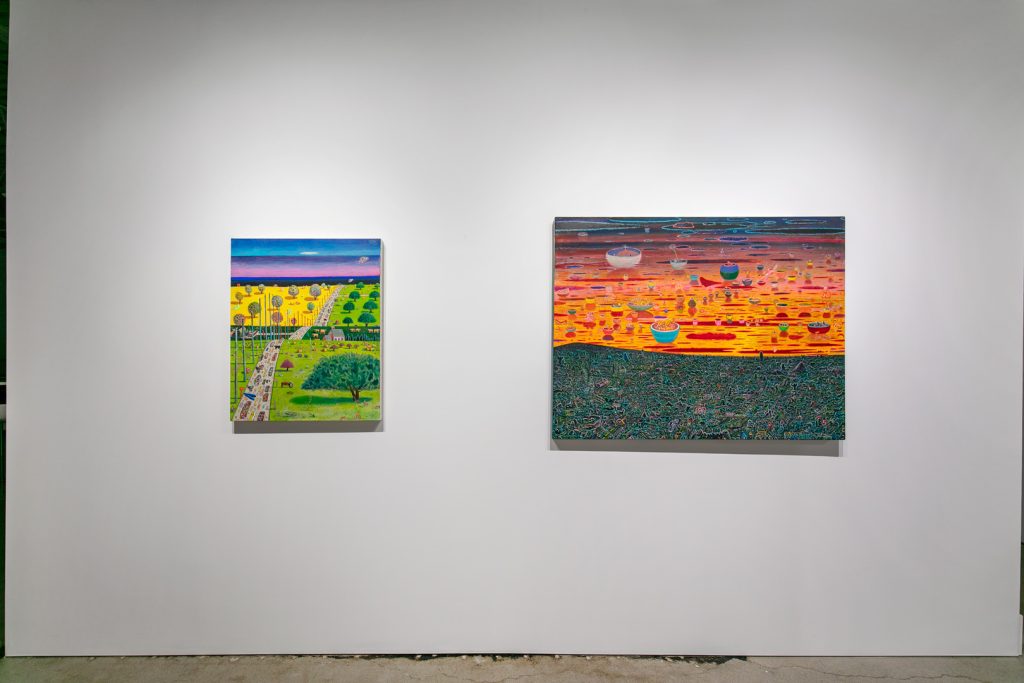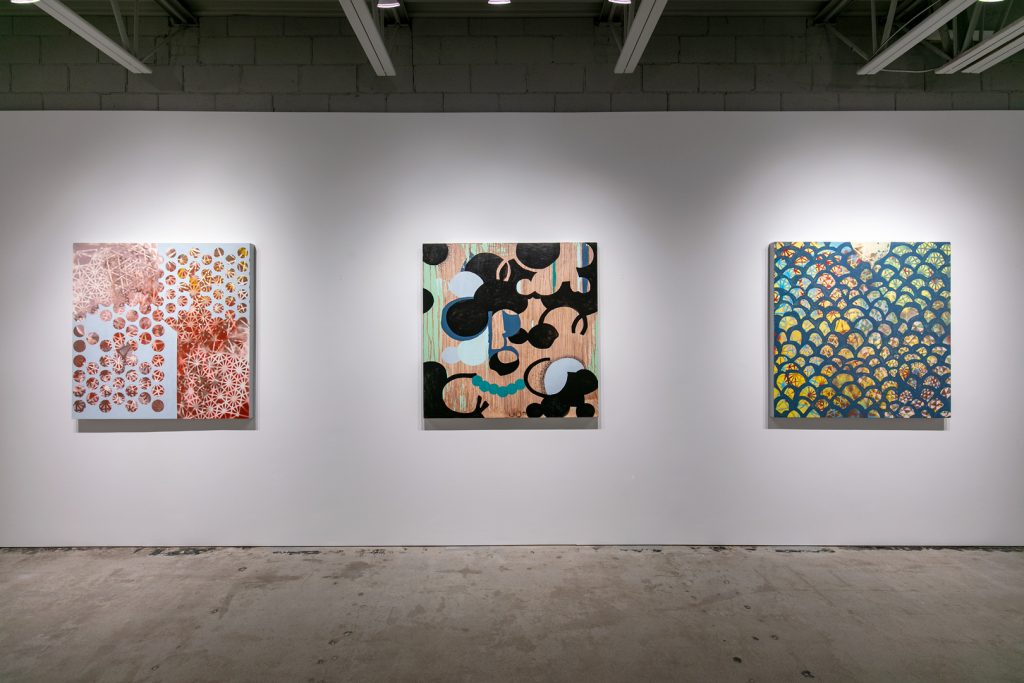TEXT BY MICHAELA MULLIN | VIEW IMAGES
Winter Group Show 2021
We have long known that art changes environment— it can change cultural, political, and social climates. It can give the gift of visual engagement with attendant impetuses for questioning what we thought we knew, often informing something completely new, and help us to embrace the unfamiliar. This experience, after the year we’ve had, is a warm welcome, a surprise that delights and hopefully binds us. Though we may still be in ‘watch party’ mode, let the analog platform built by this group of artists be one way we resolve to find contemplative joy in this new year.
Help us welcome to the Moberg Gallery stable, nationally renowned public and studio artist, David B. Dahlquist, and Kansas City-based artist Dean Kube. Also included in the Winter Group Show, with new works, are Andrew Abbott, Wendell Arneson, Derrick Breidenthal, Annick Ibsen, Thomas C. Jackson, Anita Jung, Larassa Kabel, Thérèse Murdza, Teo Nguyen, and Scott Charles Ross. Look for videos of each artist to be released every few days throughout the exhibit.
David B. Dahlquist’s ceramic works, “Architecture of the Night Sky,” “Hot and Cold,” and “Night Sky,” are the culmination of his return to drawing from nature, and the leaf has become a personal symbol, representing “a recurring memory.” Each of Dahlquist’s ceramic “drawings” has a story embedded/embodied in it. Be it a duo of narrative circles, as in “Hot and Cold,” or a chapter from his Fence Series, in “Night Sky,” these ceramic “vessels” do the telling in and between the lines. Just like the layers of patina on what he calls the “ceramic-ness” of the material, Dahlquist’s storytelling is layered. The resultant artworks, born from a word/idea/concept want to find place. Wherever they land, the art separates and defines space, creating environment, which sets the scene for “meaningful experiences.”
Painting what he calls “malleable energies,” Dean Kube understands that objects often end up telling the stories of those who choose them, discard them, inherit them, use them. The utilitarianism that is so apparent in the work, intends to underscore the human attachment. The works here—“Life and Times of a Studio Chair,” “Copper Pot,” ”Empowering Celebration” “Pink Couch” “A Story Without a Beginning,” ”Neighborhood Throne,” and “Studio Stool,”—are all acrylic paintings on birch. The term occupancy comes to mind when viewing these, because intimacy and self-reflection compel them. Kube considers the object subjects as “inspired by the presence and absence of the human figure.” His brush strokes create drips that extend the subjects toward the frame’s edge, almost in a reaching out to reconnect with their three-dimensional referents.
Andrew Abbott messes with the representation of physical states—solids, liquids, gases. He also plays with our mental perspectives. “Distant Horns and Bird Noises Passionately Applied with Brush,” appears as bowls as ships on what appears as oil on water at sunset–but sunset only in the middle of the canvas, while nighttime sandwiches what is seen aglow. At first glance, “What a Spider Web Taste Like,” appears as a straightforward rural road scene, until you look more closely. With Abbot, while it may not be the devil in the details, it is often the ghostlike moments that in their recession, stand out. Shadows seem to be selective here. At the right top of the composition, or toward the “end of this story,” cars drive not into but above the sunset. Cars fly, scale gets queered to fit more into a painting than the eye can take in at one standing. Viewing Abbot’s art can feel like a glorious contemporized Boschian game of I Spy.
Anita Jung’s “Apeirogon” and “Hills Beyond,” acrylic and stencils on panel, dazzle with repetition, patterning line and shape as cumulative experience. These pieces are wonderful interrupted tessellations. She layers so expertly, the focus on what is disappearing is as momentous as what’s building. “Gallup” is looser—the precision considered in viewing things such as fractalized sequences melts away in front of this painting. The repetition of the circular changes in scale, from small areas of pointillism to large dots. Outlines break and become bold, and the vertical grain becomes a sea of oblongs.
Viewing Derrick Breidenthal’s oil on panel works, including “Soaked (Hwy 210)” “Sylvan Stirring,” “One Way Out,” “Homeland,” and “Hard Light Day,” is like being on a long road trip, seeing through a windshield the whole world laid out in front of you. His landscapes are flat and full of sky, but he creates varied atmosphere, climates of different colors and crispness. In “One Way Out,” the darkness and the greenness engulf us; it is a rest area at which one gets lost. “Homeland” puts us on a narrower path, making the vehicle of our bodies feel narrower; the path is off center and the blue and pink hues take over the panels. Breidenthal delivers forecasts—his work offers opportunities to feel the deflection and absorption of light—and gives us a magnificent visibility scale throughout his work.
Larassa Kabel’s exhibits two new works: “The Pack,” a lithograph with gold leaf; and “Black Crown of Recurring Loss (Maquette),” bronze scultpure with wood base. The lithograph is a continuous line drawing based on coyote taxidermy forms. Its density of lines shows exaggerated areas, following the topography of the bodies. Kabel’s public sculpture, Black Crown of Recurring Loss, is now at a smaller scale. The maquettes of back-to-back fallow deer explore loss, love’s inextricable shadow.
Scott Charles Ross “Red Dog” and “Winter Sky,” both oil on linen mounted to panel, take his land/skyscape and subject abstraction a bit further; the representational is still a visual confession. The compositional focus lands these organic forms of sundog and clouds squarely in the center of the panels, so that the space around them, gridded and gray, must pull toward the life and precipitation the subjects hold and expel. These two together offer a bright spot and its cover.
McKnight Fellow, Teo Nguyen, continues his investigation of the rural in the northern regions of the Midwest with his three new works. “Midwest Landscape no. 136, no. 138 and no. 189,” all acrylic on vellum, are beautifully sky-centric, with lone structures, or small “groves” of buildings. Painting farmland that is exquisitely quiet is what Nguyen excels at. Whether the farm is working or uninhabited, Nguyen captures the air quality, the con- and destruction, and the atmospheric stillness; he stops the wind with his brush and harnesses it.
Thérèse Murdza’s works, “How to Land Softly” and “How to Play with Others,” both acrylic on canvas, look like soft stackings. Murdza paints what could be imagined as felt (pounded wool). Each bowl shape holds another, and another, though not perfectly. The textile appearance is less in relief, and more a downy sinking in. This is highlighted by the white and pink and orange that cradle and define so brightly they evoke sensations of viewing neon.
Thomas C. Jackson’s two oil paintings on canvas, “NYC Bouquets 3” and “Santa Monica Bouquets,” bring frames of realism, bundles of bright petals and tissue and cellophane depicted in vivid, vibrant and deep pigments. Close ups of the flowers give the viewer a sense of being at a stand to choose from the gorgeous display, or of leaning in to smell the sun scents.
Wendell Arneson’s new works: “Stitching it Together 1 & 2,” “Gatekeeper Barrier,” “Gatekeeper October Turn,” and “October Entrance” (all acrylic on canvas), proffer electric color. In two of these, the barely discernable figures conjure mystery—looking for light in the dark, making one’s way through paths to the gates. In the others, perforated squares are like cards, each with its image of a house. The symmetry wanes when a ladder is found, the motif of ladder, up and out, from one space to another, climb down to safety—diagonal lines cross, connect, find rooms for dots, landing spots. Arneson renders color, darkness and light as the siblings they are. This familial trinity brings forth the you are hereness; the map is the eye.
Log in long enough to navigate our online tour, where public and private meet during what we hope is the denouement of this pandemic. Or stop in during business hours to view this exhibit, safely distanced. Or call to make an appointment. There are so many choices. The last year hasn’t necessarily limited choices, but it has changed them, moved them to new, more, and different platforms. Choose what’s best for you and enjoy scrolling through the atlas of the Winter Group Show.
READ: David Dahlquist | Drawing the Imperfect Line
READ: The “Ecstatic Uncertainty” of Dean Kube
Exhibit Images
DAVID B. DAHLQUIST is a nationally recognized artist and teacher. The emphasis of his work has been in the design and creation of major, site-specific sculptural public-art installations, integrated within building architecture and the landscape. In 2016, he received the Governor’s Excellence and Innovation Award from the State of Iowa, recognizing his contribution to the arts in Iowa and his career achievement. The year 2020 marks his return to personal studio ceramics. This return reaffirms his original love of clay.
DEAN KUBE creates contemporary abstract portraits as an expression of collaborative self-reflection, and in homage to the beautiful uncertainty of life. His subjects share their vulnerability through their energy and physicality, and as Kube observes and visually renders this, he is able to examine and express his own. He paints invisible yet palpable energies using intentionally unfamiliar tools and emotive gestures that honor this co-sharing of self-reflection between painter, subject, and viewer. In turn, his paintings depict both unique individuals and the dynamism of personhood.
ANDREW ABBOTT creates multi-layered, seemingly obsessive artworks, with non-traditional found materials such as shopping bags, cabinet doors and notebook paper. He received his BA in Studio Art from University of North Carolina. Abbott was born in Nova Scotia, grew up in North Carolina, served in the U.S. Army as a medic, and has lived in Georgia, Maine, Canada, and Puerto Rico. He currently resides in Brooklyn, NY, with his wife, Natalia. His works are exhibited internationally.
WENDELL ARNESON received a BA from Luther College in Decorah, Iowa, an Art Education Certification from the University of Wisconsin, and an MFA from Bowling Green State University in Bowling Green, Ohio. His works have been exhibited at the Toledo Museum of Art, Groveland Gallery in Minneapolis, Wichita Art Center, and the Rochester Art Center, to name a few.. He taught at St. Olaf College, Northfield, Minnesota, from 1978 to 2015, where he specialized in painting (oil, acrylic, and watercolor), drawing, and color design.
DERRICK BREIDENTHAL combines severe space, light and color to express the identities and emotions of the regions he paints. His landscapes, influenced by rural America, are part vibrant and enthusiastic, part traumatized and bare. Breidenthal attended The University of Kansas (Lawrence, KS) and Johnson County College (Kansas City, KS). His work has been exhibited throughout the US. A Missouri native, he lived in Colorado for 10 years before returning to Kansas City in 2004, where he currently resides.
ANITA JUNG uses collage and recycled materials in her printmaking process, book covers and pre-used print surfaces are common in her work. These anonymous materials are beautifully abstract, they hold the cold precision of technology simultaneously with the humility of being deemed none useful. She is currently a professor at the University of Iowa. She attended Arizona State University, where she received a Bachelor of Fine Arts in painting and drawing; she received her Master of Fine Arts from the University of Wisconsin-Madison in the graphic arts. She was born and raised on the Southside of Chicago.
LARASSA KABEL is a multi-media artist, best known for her large-scale prints and drawings of falling horses in the series Any Minute Now. Her curatorial work with Moberg Gallery comprises UpSpeak and beyond nature. Kabel earned her BA from Iowa State University (Ames, IA). Her commissions include the White House Christmas card for President and Michelle Obama in 2012. Awards include a 2017 United States Artist Fellowship nomination, and a 2017 Design Achievement Award, Iowa State University Alumni Association; a 2016 Joan Mitchell Foundation nomination, a 2016 David Hurd Innovator in the Arts Award.
TEO NGUYEN was born and raised in a fishing village in Vietnam, the son of a poet and a glass painter. Nguyen moved to the United States when he was sixteen years old, and in his work, he takes into account both the culture from his country of origin, as well as that of America. His large-scale paintings range from abstraction to photorealistic landscapes. He studied art and design at De Anza College (Cupertino, CA); Fresno State University; and École des Beaux-Arts (Paris). Nguyen is a 2020 McKnight Visual Arts Fellow. He currently resides in Minneapolis.
SCOTT CHARLES ROSS, a Waterloo native now living in Des Moines, received a BA from Grinnell College and has taken graduate courses at Iowa State University and Drake University. He is inspired by the people and travels of his life, as well as his environment. His strong linear paintings include references to architectural elements and landscape. Ross’ process involves many layers of charcoal, oil paint, wax and glazes, which results in a painting with a hard and glossy surface. His paintings are produced on linen and stretched over wood panels.
THOMAS C. JACKSON explores American imagery in painting, photography and ink brush drawing. His work has been shown in over 100 juried, invitational and solo shows nationwide, including solo exhibits at the FiggeArt Museum (Davenport, IA), Dubuque Museum of Art, and the Cedar Rapids Museum of Art. Born in 1950 in Rock Island, Illinois, Thomas Jackson received his B.A. from Western Illinois University in 1972 and his M.F.A. from the University of Notre Dame in 1974. Jackson taught art at Mount Mercy College in Cedar Rapids, IA, and worked in marketing for 20 years before becoming a full-time artist in 2000. Artist
THÉRÈSE MURDZA builds her signature bright, richly textured paintings for both commercial and residential portable collections. Using an animated range of circles, lines and colors, she creates large, multi-paneled works on canvas, and smaller works on canvas and paper. Her early musical training remains an influence: “If we could see spoken words, if we could see music, somehow see a measure of the sound, thatʼs what I paint.” She has a BS in Theatre Arts from Towson University (Towson, MD). She studied Life Drawing at the Durham Arts Council School; Botanical Drawing at the ArtSchool at The ArtsCenter (Carrboro, NC); and Mural Painting with Larry Kangas (Portland, OR). Murdza has a studio in Portland, Oregon.
